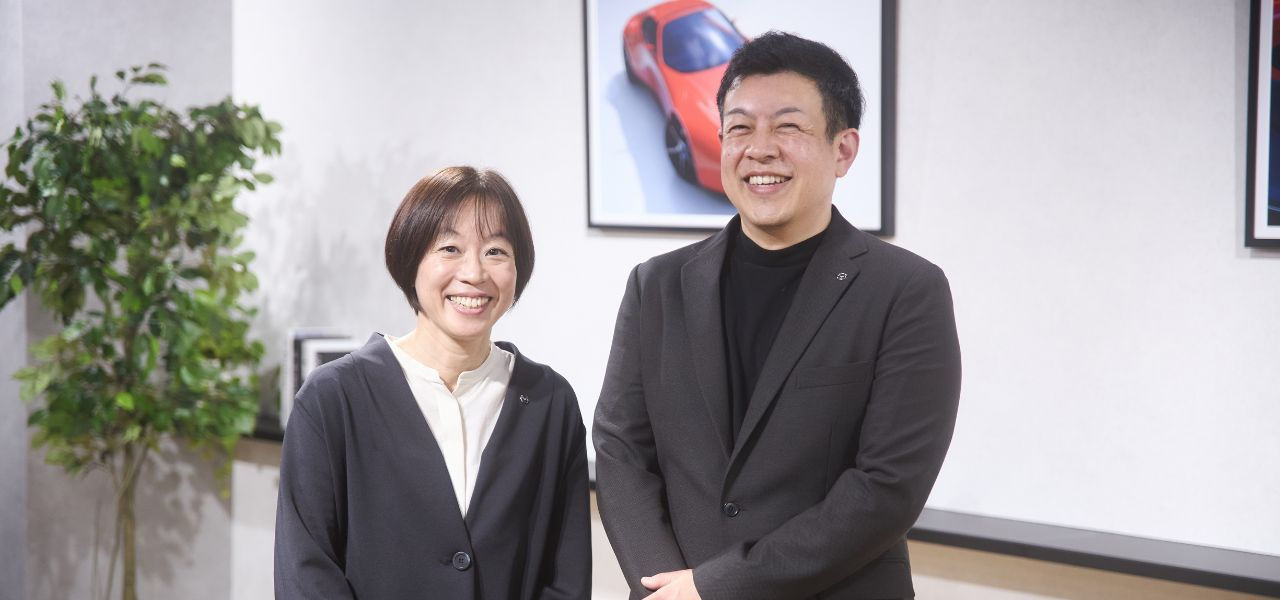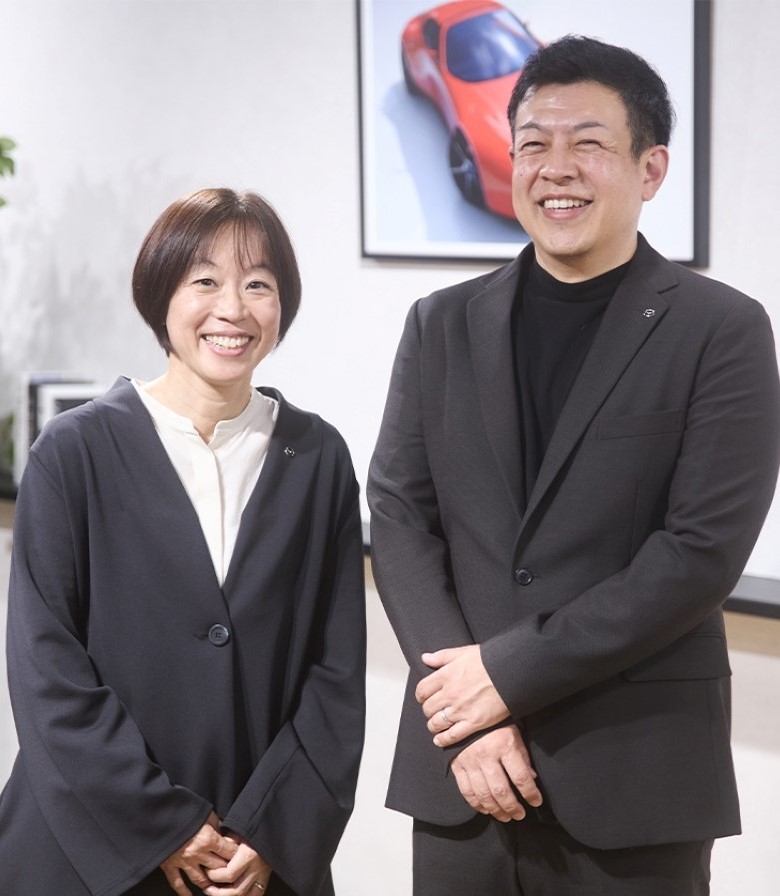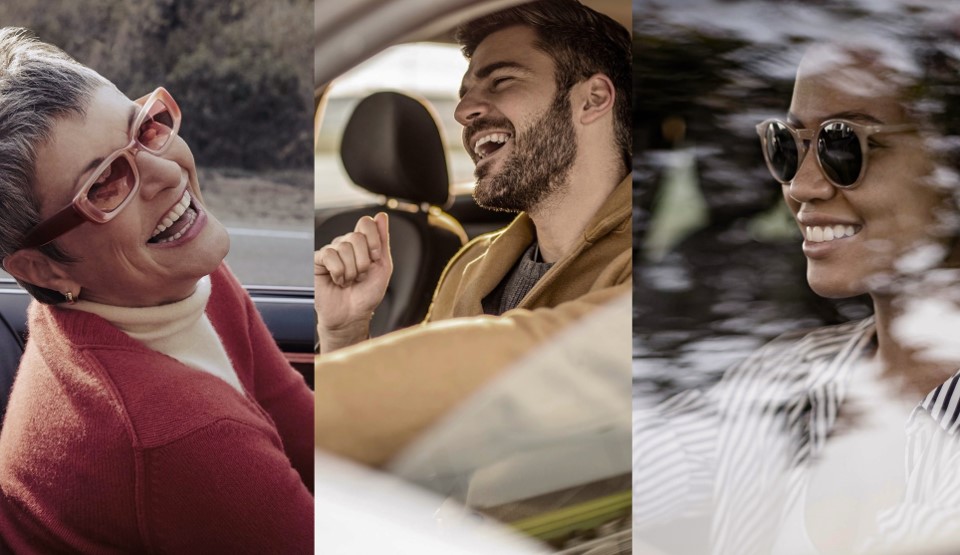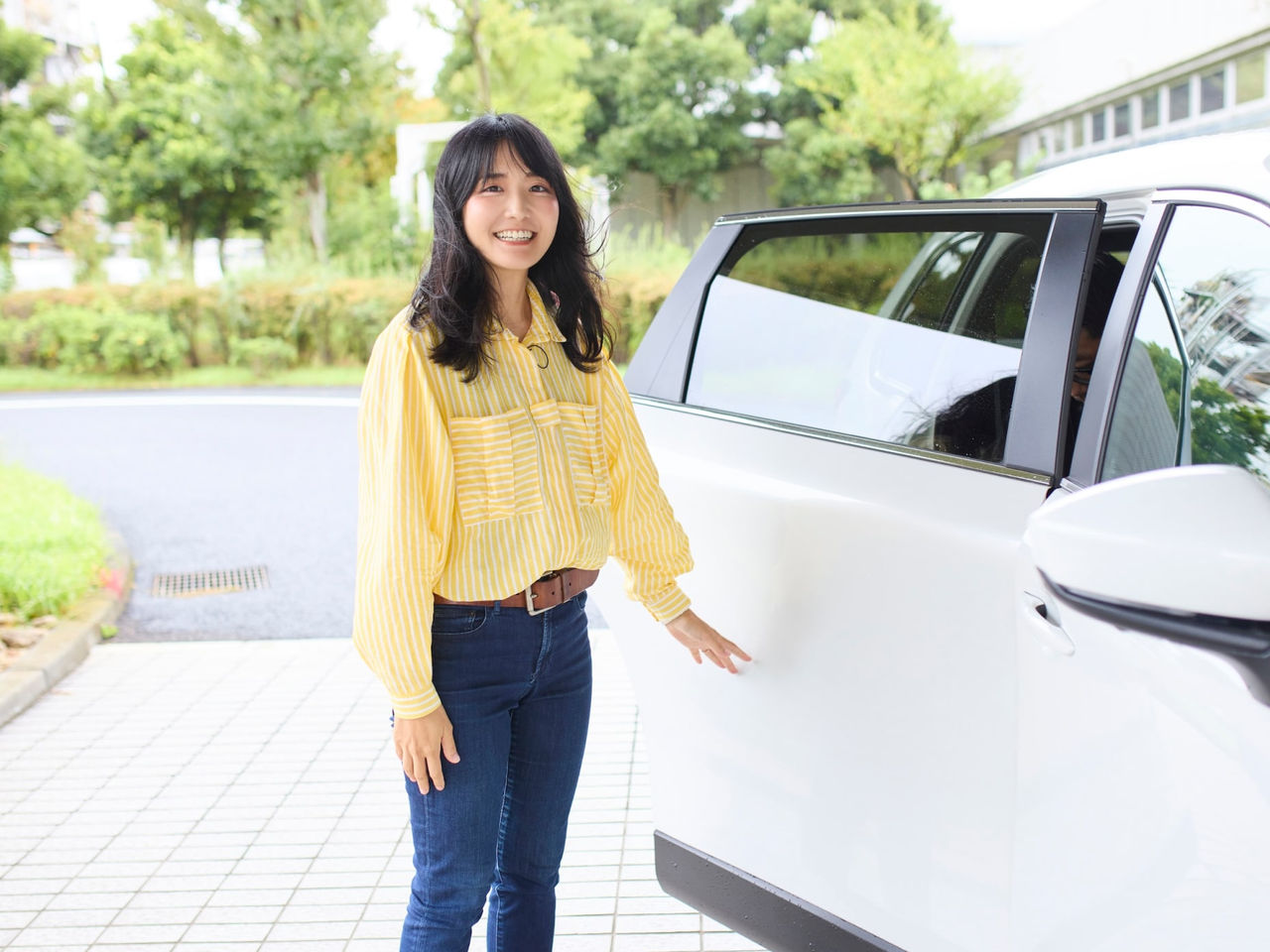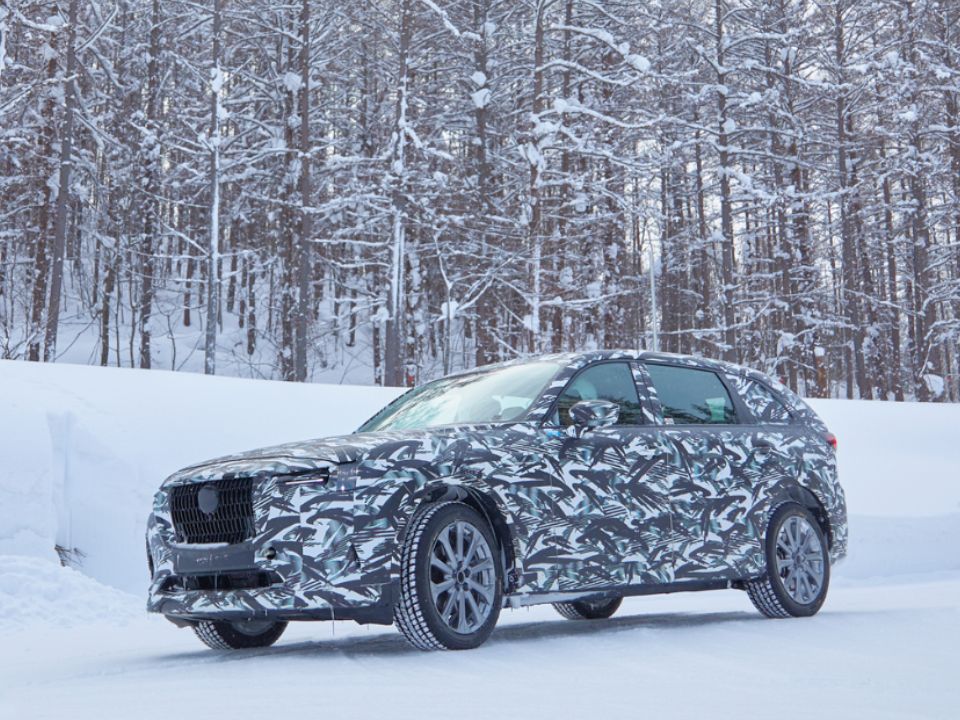2025.03.13
Can Driving Make You Healthier? Neuroscience and AI Research on Human Experiences in Mazda Car Creation and Wellbeing
Mazda is taking a different approach to car developments, positioning cars as something that can actively contribute to driver health rather than simply moving people from point A to B.
At the heart of this lies Mazda's enduring human-centric philosophy and exploration of how motion can enhance wellbeing. This is driven by the question: How can mobility meaningfully enrich our lives?
To find out more about the latest research at Mazda, the Mazda Mirai Base editorial team sat down with Masanori Honda, General Research Manager of Advanced Human-Centric System Research Field, Technical Research Center, and Nanae Michida, Principal Engineer.
Can Cars Make You Healthier? Understanding the Human-Vehicle Connection
Honda:
Our research aims to create new human-centric value by bringing together experts in diverse fields, from human research and AI to quantum computing and automotive engineering. We’re also researching the idea of creating cars that can improve your health the more you drive them. This is an area that Michida is leading.


Masanori Honda, General Research Manager, Advanced Human-Centered System Research Field, Technical Research Center
Cars that improve your health the more you drive seems to go against the common perception of driving as an unhealthy option compared to walking. Can you tell us more?
Honda:
Actually, there’s substantial research to show that experiences of mobility are crucial to wellbeing. At Mazda, we believe that cars can play a significant role in this.
Michida:
We're not suggesting people should stop walking and drive instead. We’re focusing on the positive experiences people can gain from car travel, from the act of driving itself to taking in the scenery and fresh air, or discovering new flavors and meeting new people at your destination. These experiences can stimulate both mind and body, leading to a healthier lifestyle.
Right now, we're researching how the brain processes stimuli related to car travel: changing sounds, the scent of natural air, physical sensations of driving, and social interactions at destinations. When these experiences are processed by the brain to create positive emotions, we believe they could contribute to overall wellbeing.
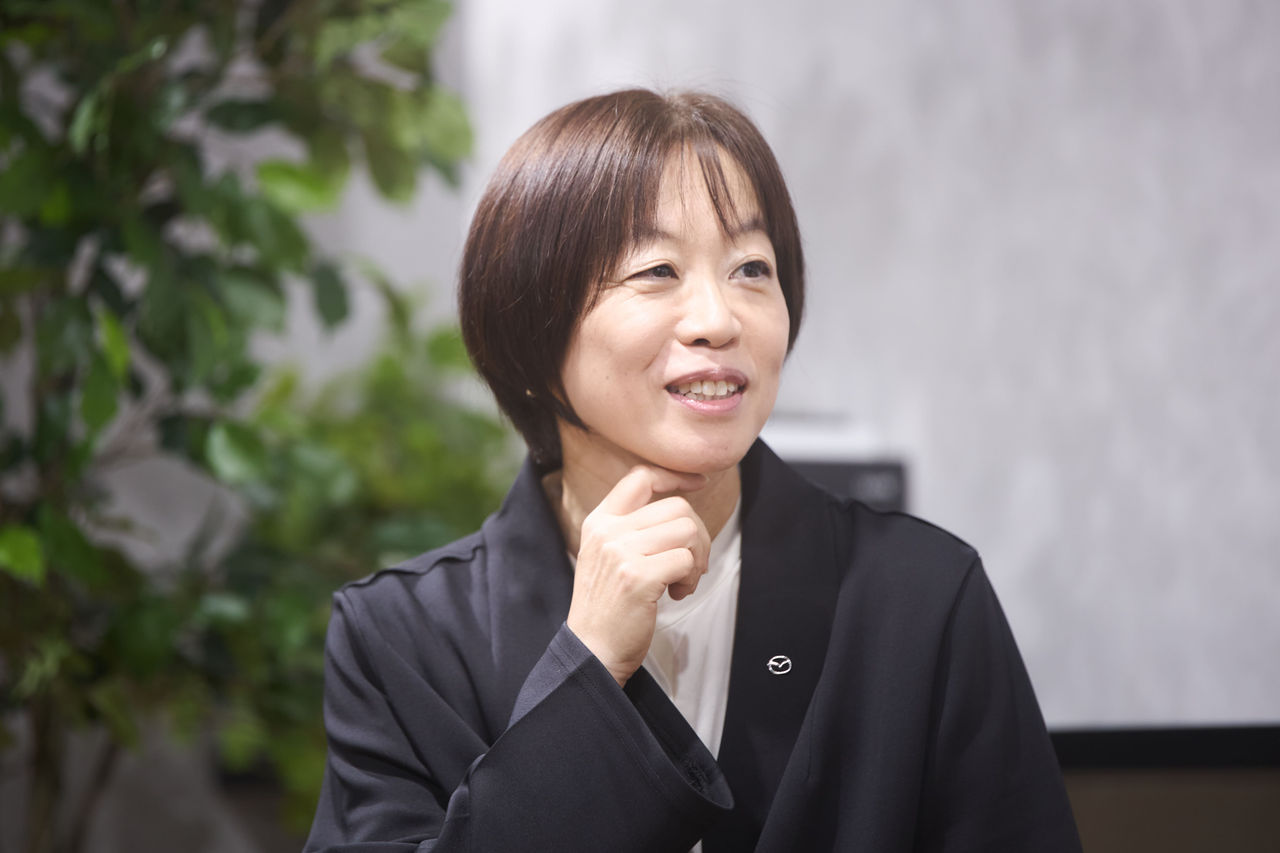

Nanae Michida, Principal Engineer, Advanced Human-Centered System Research Field, Technical Research Center.
Michida, brain function seems to be central to your research. Could you elaborate on that?
Michida:
When it comes to making driving effortless, comfortable and safe, Mazda research has traditionally focused on ergonomics. We've also built expertise in Kansei engineering, a field that links human subjective feelings—such as a sense of agility, relaxation, or excitement—to engineering metrics. Now we’re going beyond these feelings to include unconscious responses, venturing into Kansei neuroscience, an area that incorporates insights from neuroscience.
Sensory Experience Research at Mazda
Can you tell us more about how you’re using Kansei neuroscience?
Michida:
Kansei neuroscience studies the underlying causes of human sensory perceptions. At Mazda, we’re applying these findings to car development and services. One great example of this is windshield design.
As streamlined cars became popular, there were some drivers who felt that older car models were easier to drive. When a retired expert said that "the view from the window was more beautiful in older cars” we began to wonder why the view would differ between cars. It prompted a deeper look at this sensory perception.
With the research team at Mazda, we focused on the shape of the windshield frame and noticed that with streamlined designs, the windshield support pillars made the window frame appear like an inverted trapezoid. Using saliency mapping (a technique that calculates and displays prominent visual elements based on brain information processing mechanisms), we discovered that certain window shapes unconsciously drew drivers' attention in unexpected directions.
Through experiments using fMRI (*1) and driving simulators, we confirmed that window frame shape affects driver’s depth perception, driving stability, and attention distribution. Based on these findings, Mazda windshields are now designed to enable drivers to maintain focus on the line of travel while still easily noticing important visual information in the surroundings. These findings have been incorporated into designs since the Mazda CX-8, achieving both driving comfort and aesthetic appeal.
⋆¹:For information about fMRI, please see here


In vehicles with a steep windshield angle (streamlined cars with pronounced aerodynamic profiles), the windshield support pillars are significantly angled. This creates a trapezoidal-shaped windshield that tends to draw the driver's eyes toward the upper right corner, making it difficult to maintain focus on the intended viewing area.


Vehicles with a moderate windshield angle (typical of traditional car designs) have more vertical windshield support pillars, resulting in a nearly rectangular windshield. This design makes it easier for drivers to maintain proper gaze direction, which improves driving stability and awareness of the surrounding environment.
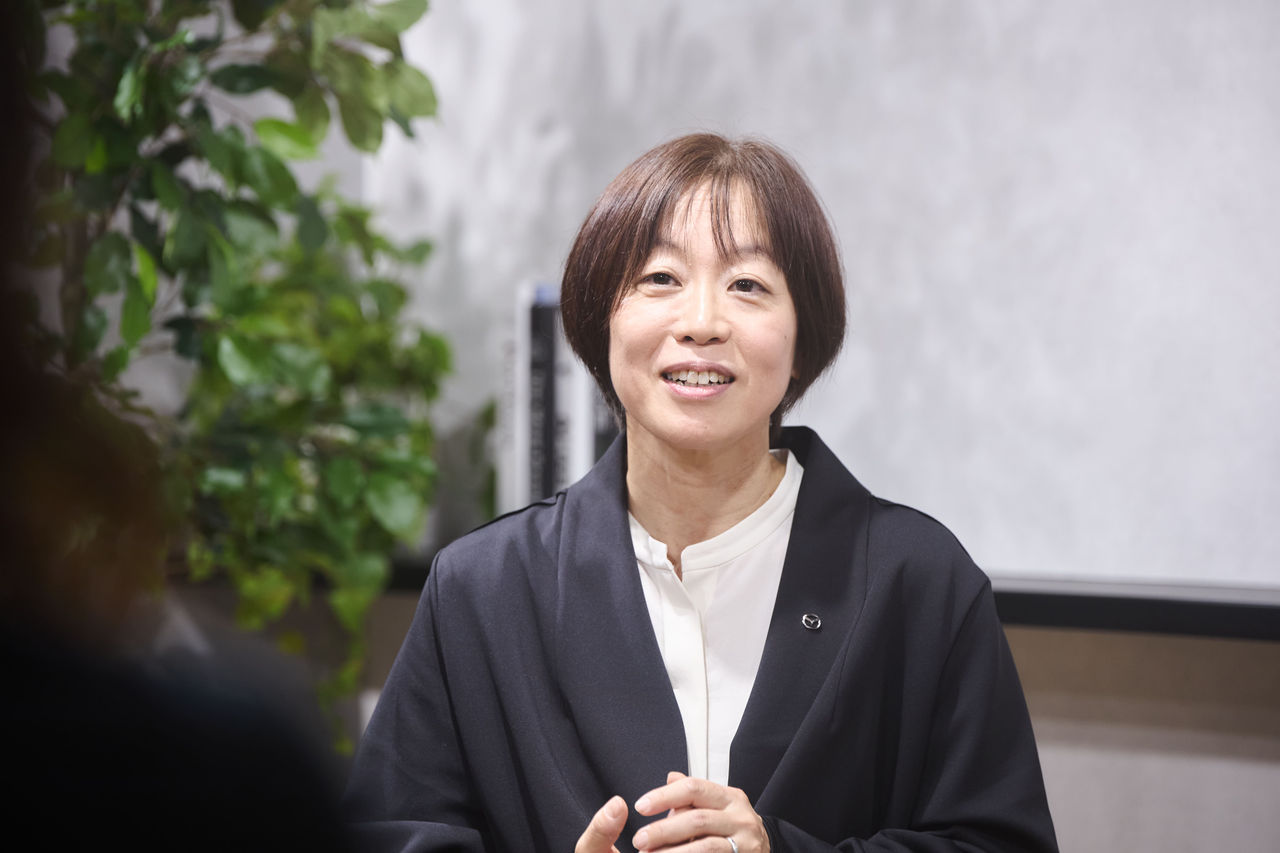

Kansei engineering and neuroscience are unusual choices for a car manufacturer. What led you to these fields of research?
Michida:
I studied psychophysiology at Hiroshima University's School of Integrated Arts and Sciences. Psychophysiology examines the interaction between mind and body using physiological indicators. During my graduate studies, someone from Mazda visited our laboratory and after collaborating on experiments, invited me to join the company. After joining Mazda, I focused on the connection between mind and body, considering human bone and muscle structure, to develop comfortable car seats.
So, investigating the interaction between car and driver been part of your research from the beginning?
MICHIDA:
That’s right. When I was working on seat development, I recognized the need to study neuroscience to improve various sensory experiences. After that, I took part in joint research with neuroscientists from Hiroshima University and the National Institute for Physiological Sciences to visualize perception and sensibility for practical applications, as part of the Ministry of Education's Center of Innovation Science and Technology based Radical Innovation and Entrepreneurship Program (COI STREAM).
In one of the experiments, based on the assumption that many people feel more excitement driving a slalom course than driving straight, we fitted drivers with EEG monitors to measure brain activity in regions that activate when experiencing excitement. We also attempted to quantify how people perceive the quality of car interiors, as well as the sense of shared experience between driver and passenger.


Honda:
In the Advanced Human-Centric System Research Field that I oversee, we've been advancing AI research for many years. Previously, AI applications mainly focused on vehicle weight reduction to lower CO2 emissions. However, aligning with Mazda's core human-centric approach, we’re now also working on developing AI models that can predict human characteristics and needs, to create new value for our customers.
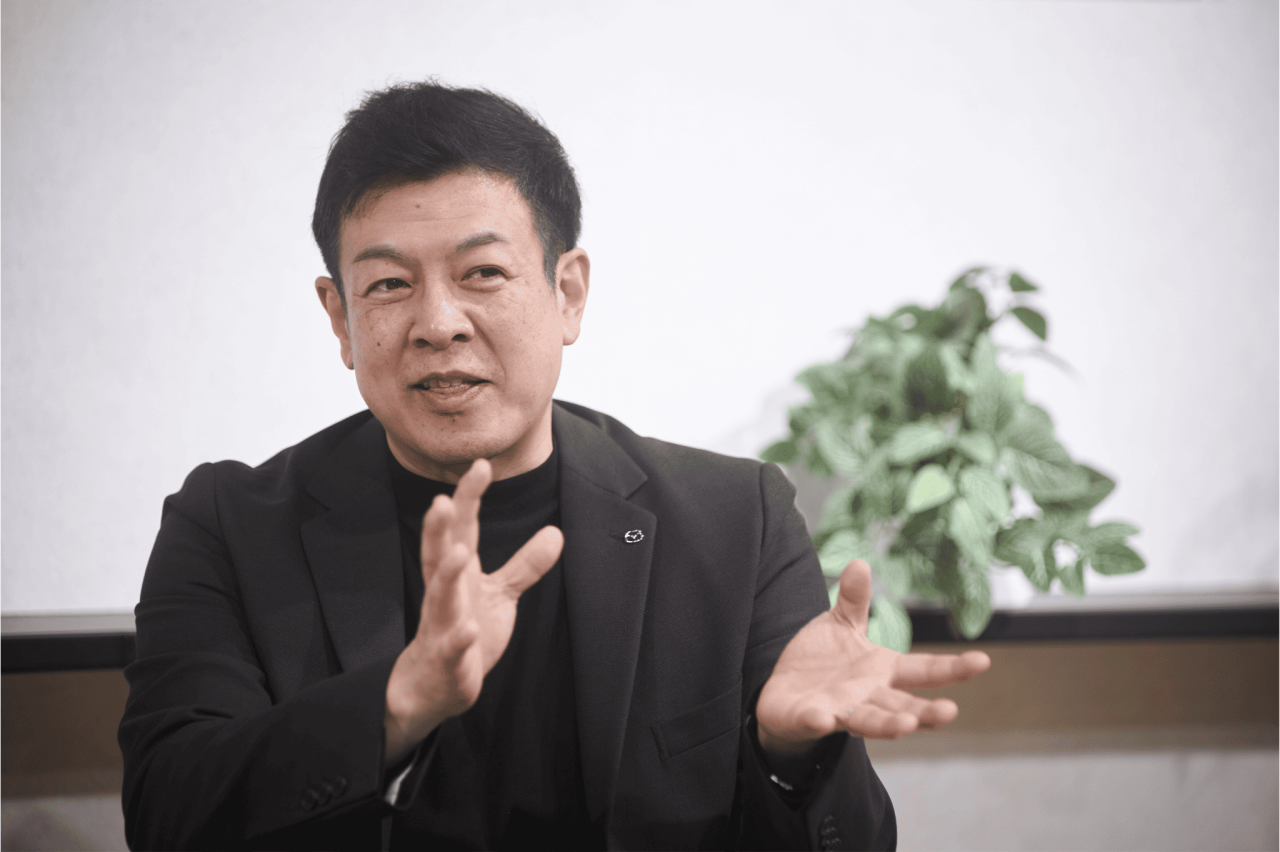

Developing Foundational Resilience to Experience Joy and Wellbeing Through Mobility
What does human-centric car development mean to you?
Michida:
For me, it’s about prioritizing emotional experiences and personal growth. Neuroscience has shown there's a reciprocal relationship between how we feel in the moment and our cumulative experiences: the more positive experiences we accumulate, the higher our sense of wellbeing becomes, and people with higher wellbeing tend to experience positive emotions more easily.
People who are reluctant to venture out often experience moments when they decide to go along anyway, and end up having a great time. In situations like this, when we recognize that we had a positive experience because we took action, or that we accomplished something we thought would be challenging, it creates momentum for future action. By taking action based on anticipating good results, we can accumulate more positive experiences. I call this “foundational resilience,” a life-enriching ability that can be developed over time.
In other words, you’re supporting people's initiative to take the action of going out, rather than simply offering autonomous transportation to take us to our destination?
Michida:
Exactly. When you accomplish something yourself, it’s a very different sense of joy to when something is achieved without your agency. It’s this genuine happiness that will develop your foundational resilience. At Mazda we envision support that is tailored to each person's driving skills, helping them gradually gain more life-enriching experiences through their relationship with Mazda vehicles.


This support includes not only newly licensed drivers, but also elderly drivers who might be worried about eventually giving up their licenses?
Honda:
That’s correct. Consider someone who's beginning to worry about their reflexes, spatial awareness, or decision-making abilities. They might want to drive somewhere new and try new experiences, but not have the confidence. Helping these individuals continue to explore new horizons independently is a broader way to support personal development and growth.
Michida:
People who notice their physical abilities declining often fall into a negative cycle: they go out less, which leads to decreased physical strength and reduced social interaction, which in turn affects their cognitive abilities. However, driving to new places and exploring on foot are also valuable forms of exercise for the body and mind. We see cars playing a significant role in supporting the process of regaining mental and physical strength through mobility.


Neuroscience Reveals Unexpected Benefits of Mobility
Would the type and level of support vary depending on the person's physical condition and driving skills?
Michida:
Yes. To create cars that make you healthier the more you drive them, we need to assess each person's condition and provide appropriate support. To that aim, Mazda is currently participating in the Ministry of Education's COI NEXT program at Hirosaki University hub, conducting joint research with Hirosaki University in Aomori Prefecture.
For the past 20 years, Hirosaki University has been running the Iwaki Health Promotion Project Health Checkup, annually collecting approximately 3,000 data points on physical and mental health from over 1,000 healthy individuals. We're using this data to understand the relationships between health, happiness, wellbeing and cars. While we can easily obtain data from people with illnesses or injuries at hospitals, data from healthy individuals is surprisingly scarce. The Hirosaki data is invaluable due to its scale and long-term nature.


Michida:
Interestingly, we've found that people who enjoy cars tend to be healthier, regardless of gender. Those who enjoy car travel and get excited about natural beauty often show higher cognitive function and better overall health, which might be linked to their sensory awareness. People with rich sensory awareness are likely to be both healthier and happier.”
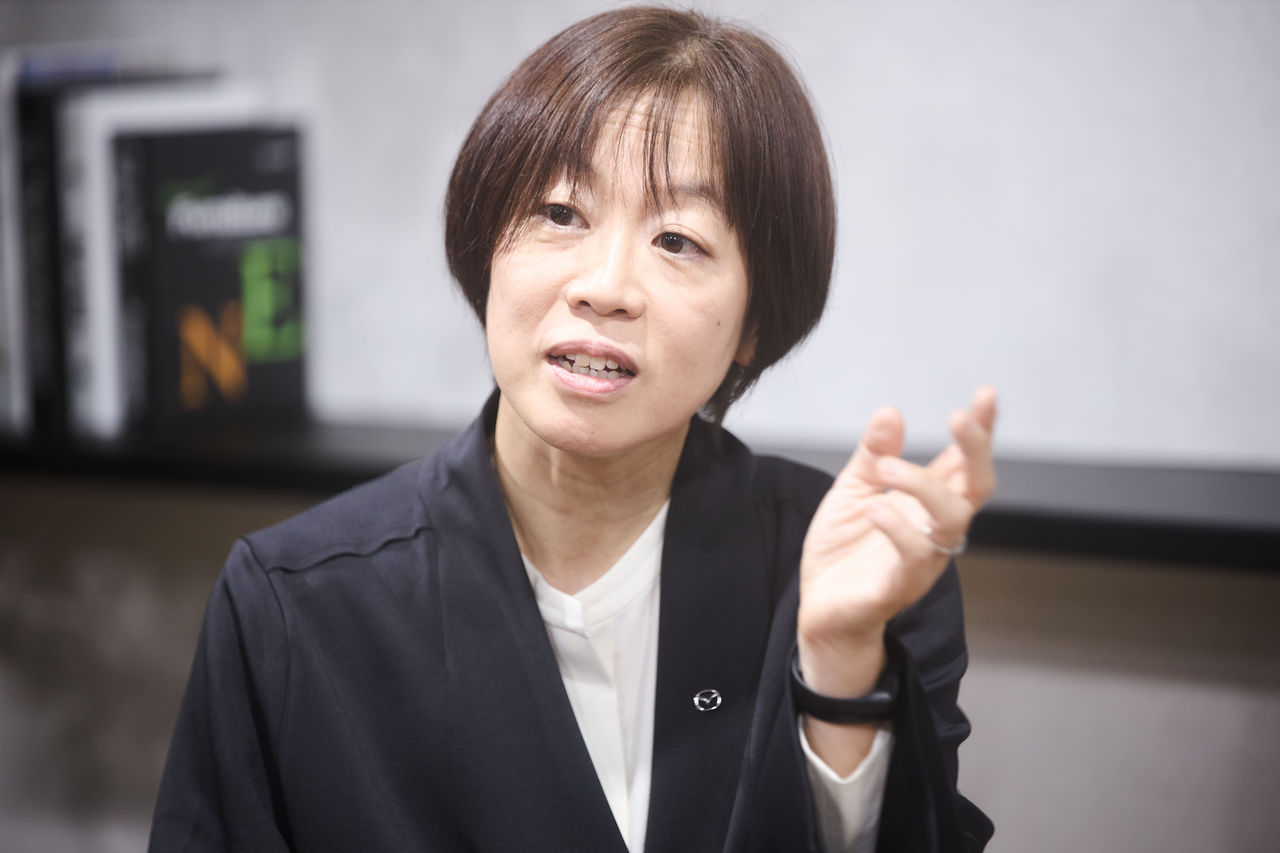

With Mazda's research extending into fields such as human sensibility, what personally motivates your research?
Michida:
I started studying psychology because I wanted to understand what makes other people different from me. Ultimately, I think I wanted to understand myself better through understanding others. Wellbeing is about "living well," and I've been interested in what it means for people to live well since my student days. That's my fundamental motivation.
Honda:
For me, it's largely about responsibility—combining Mazda's historical assets and culture of human research, including Kenichi Yamamoto's Kansei engineering, with today's remarkable advances in AI and IT technology to create human-centric technology for the next generation. Being a relatively smaller automaker allows Mazda the freedom to pursue innovative research. I enjoy the sense that we can expand our horizons through our own efforts.
As Kansei neuroscience research moves toward practical implementation, what are your future outlooks?
Michida:
Even before explicitly focusing on wellbeing, Mazda's development approach naturally aligned with these concepts. Earlier, we discussed the importance of experiencing that feeling of accomplishing something challenging or of forging your own path. As an automaker, Mazda wants to deliver these experiences through mobility.
Mazda has minimal departmental barriers, creating an environment where we can collaborate widely on car development. Now we're also working with various companies and institutions, like Hirosaki University. I want to continue expanding our research while building more connections with others.
Honda:
I want to bring Mazda's human research insights to society as quickly as possible through the use of AI and big data. Additionally, we want to combine our strength in model-based development (a method that creates simulation models on computers and conducts development and verification simultaneously) with human models from our human-centric research to create a world-leading advantage. Through these efforts, we aim to contribute to the wellbeing of our customers and society.


From the Editorial Team
Can driving improve your health? Our interview with Mazda’s research team revealed the vision and challenge of creating cars that enhance wellbeing the more you drive them, and how Mazda's research connects to people's joy of mobility and wellbeing.
The research into human perception and sensibility, along with the concept of foundational resilience, shows how small successes can accumulate to be a force that can enrich people’s lives. It’s an approach completely aligned with Mazda's enduring human-centric philosophy.
In our next issue, we'll visit Mazda team members working on joint research with Hirosaki University in Aomori Prefecture, reporting on their efforts to create cars that make you healthier the more you drive.
